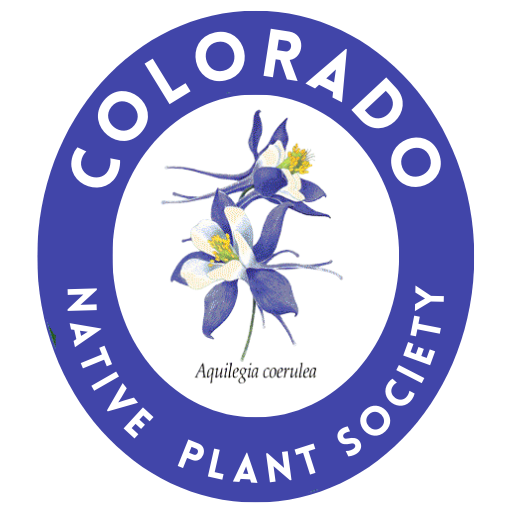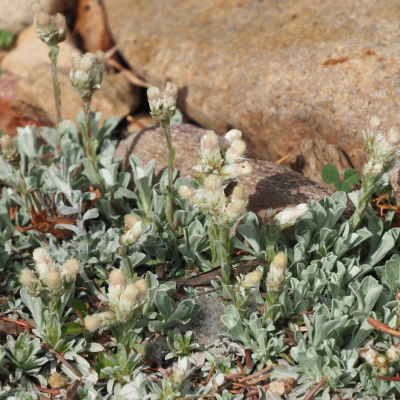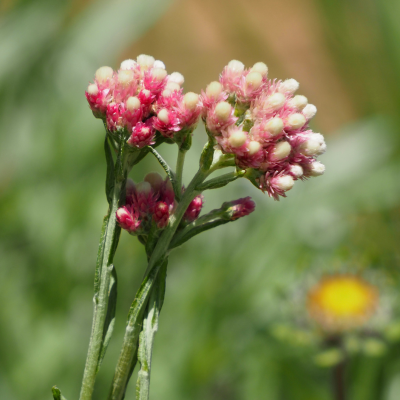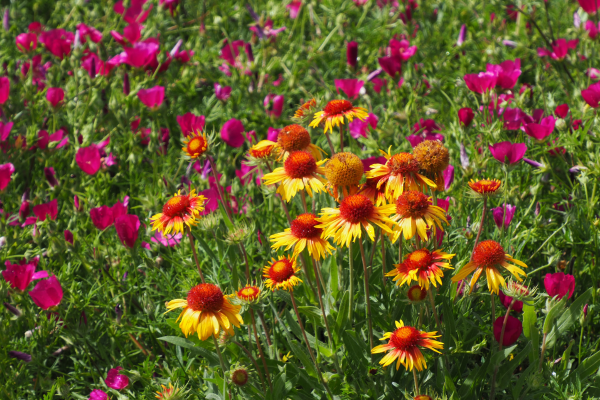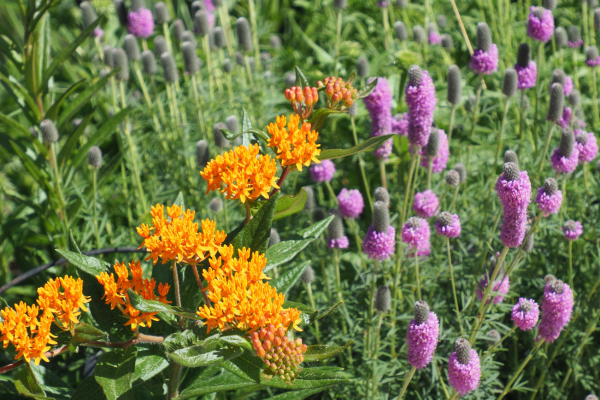No matter how much planning and research goes into the creation of a native garden, there are bound to be hits and misses! Even if we use plants that we know are native to our region, the conditions in our garden – from soil composition and drainage to the effects of nearby properties and wildlife – may not be quite what the plants prefer. Many of our natives are widely adaptable, but each garden is unique. The wise gardener expects surprises and enjoys the learning curve. Here are a few of the recent hits and misses from my own garden and ones I have visited.
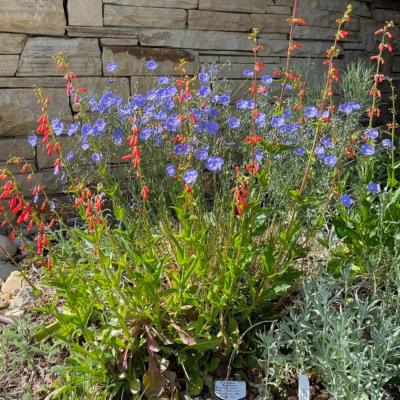
Firecracker penstemon and Lewis flax make a winning combination. Prairie sage, lower right, went rogue.
Starting with a HIT! This combination of firecracker penstemon, Penstemon eatonii and Lewis flax, Linum lewisii, created a delightful color burst in early May with the added attraction of contrast in form created between the upright penstemon stems and the loosely airy flax. They both flowered for almost a month. The penstemon has the added benefit of retaining a green presence, at least in the foothills, during the winter months.
MISS: Prairie sage, (silver sage, white sage), Artemesia ludoviciana planted to ‘fill in the gaps’ while the slower plants established took over the town. It’s wiry, tenacious, and freely roving rhizomes formed thick mats underground and the resulting growth on top threatened to choke out everything. Use this beautiful plant in naturalized settings or larger landscaped areas.
Small-leaved pussytoes, Antennaria parvifolia made a perfect ‘endpiece’ in this garden.
HIT: A small corner at the end of this garden was the perfect spot for small-leaved pussytoes, Antennaria parvifoia. It took six very small plants two years to fill in the space. The fuzzy white flowers were always a draw when they were in bloom, and also afterwards when the fruits were getting ready to fly away, carried by fluffy tufts of white hairs. Antennaria rosea was planted also, toward the middle front. Both species form good ground covers. Keep on top of weeds early using tweezers to grasp their roots between the closely packed leaves. We have 13 species of Antennaria native to Colorado. Find good ID help for eight of them on the SWColoradoWildflowers site.
Blossoms of small-leaved pussytoes caught the attention of passers-by even though they are small!
Rosy pussytoes are irresistable to people and also a host plant for the American Lady butterfly caterpillar.
MISS: Achillea millefolium, our native yarrow, was another mistake in this confined garden space. The aggressive nature of the root system (rhizomatous, like the silver sage) caused this plant to creep all over and choke out nearby competitors. It was particularly fond of sneaking into the crowns of its neighbors where it could grow undetected. Good weeding practice should include carefully lifting up the outer leaves of desired plants and eliminating the weeds that have become established ‘under the radar.’
HIT: This combination of blanket flower, Gaillardia aristata and winecups, Calliroe involucrata was a standout. Both of these hardy natives have a long blooming period early to late summer. You may know winecups by the other common names of purple poppy mallow or buffalo rose. But by any name this plant is a winner, with its curved petals overlapping to form a chalice shape. Deep taproots allow it to withstand drought and it has a high tolerance for poor soil. The long taproot makes it hard to transplant, but once established winecups will spread and it drapes nicely on overhangs.
Blanket flower is a Colorado favorite for visitors of all stripes – people, pollinators, bees, and birds. It is considered a short-lived perennial, and it self-seeds so may move around a bit in a garden but will never crowd out its neighbors like some other plants we know. Do your best to get the true native, straight species plant, instead of the many cultivars now on the market. Deadheading is not necessary but does encourage new blooms. Stop deadheading in the late summer and enjoy goldfinches and other songbirds coming to snack.
Winecups, Callirhoe involucrata, paired with blanketflower, Gaillardia aristata, for a long season of bloom.
Blanketflower shows good form from any angle! Use the straight species, the true native, to maximize the benefits to wildlife.
MISS: One last, sad miss. You can’t have it all. It’s a mistake to include too many different species in a garden that cannot be considered a large space. Depending on size, of course, limit your design to about three to five different species for each of the three growing seasons, spring, summer, and fall, with no more than three species per season for smaller gardens, five for larger ones. Plant individual species together to form a mass for a larger visual impact, then establish a pattern to repeat throughout your space. This makes the space look planned and gives a pleasing display for the people who will be enjoying your efforts.
HIT: One more combination for a native garden that will please people and pollinators during the last part of our growing season – Asclepias tuberosa, with its misleading common name of butterfly weed, and Dalea purpurea, purple prairie clover. The prairie clover’s deep taproot make it very drought tolerant but difficult to transplant. Thimble-shaped flowers bloom from bottom to top and the seedheads are cool, too. Another plant with a deep taproot, buttefly weed is a vibrant pop of color. This combination really pulls in the pollinators!
Have fun in your native garden and take pride in the fact that you are providing food and habitat for local wildlife, and helping preserve biodiversity in our changing world!
Sue Dingwell
all photos by author
Butterfly weed, Asclepias tuberosa, and purple prairie clover, Dalea purpurea both have deep taproots and resent over-watering.
You won’t want to miss this year’s Annual Conference Denver
September 20 and 21
